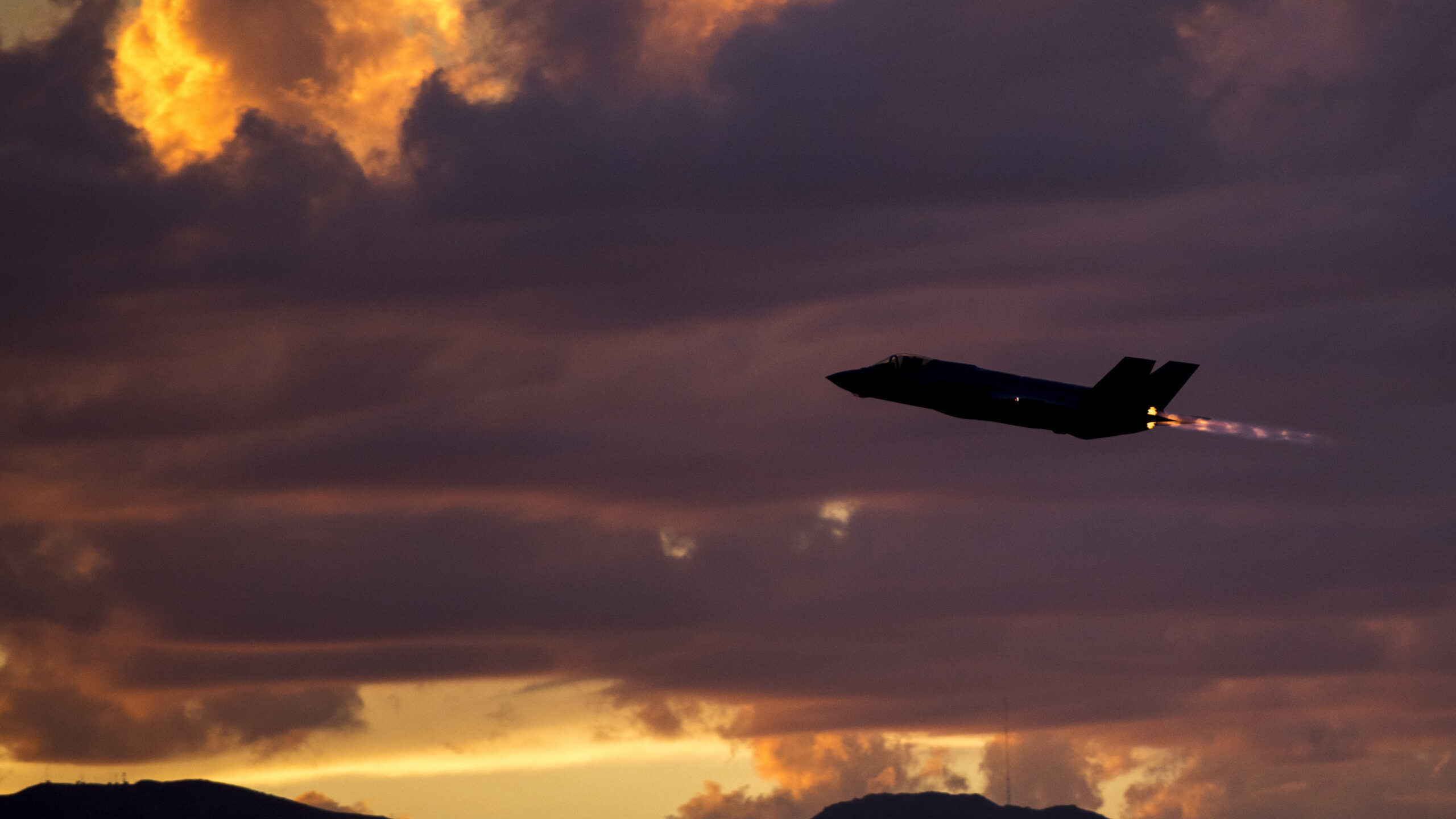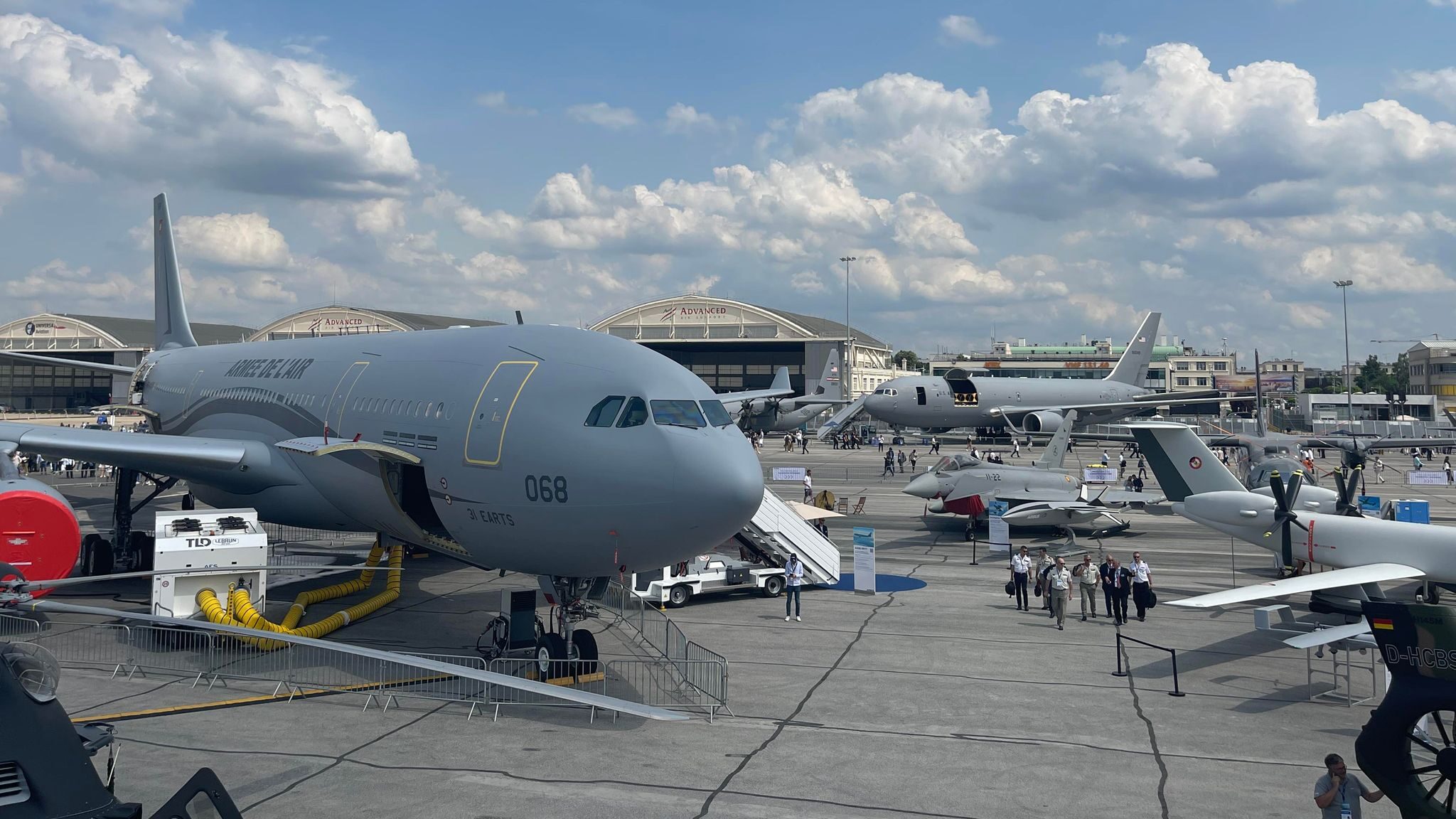
An F-35A Lightning II fighter jet takes off from Luke Air Force Base, Ariz., Oct. 11, 2018. (U.S. Air Force Photo by Airman 1st Class Jacob Wongwai)
UPDATED 12/20/23 at 10:40 am to reflect the Senate confirmation of senior officers.
WASHINGTON — From smaller suicide drones to a new stealth bomber, 2023 has been a year of evolution for air power.
The Air Force announced it would award a contract for the world’s first sixth-generation stealth fighter next year, as the war in Ukraine highlighted the potency of modern integrated air defenses. The service’s new B-21 Raider also embarked on its first flight as officials explore other innovations like the Collaborative Combat Aircraft drones that could join fighter jets in battle.
And though the effects of the pandemic continue to ripple across the industry and hamper production lines, the aviation business is booming. Events like the Paris Air Show came roaring back after being canceled in 2021, where Airbus this year logged the largest commercial aircraft order ever in a deal with Indian airline IndiGo. And while the Dubai Airshow took place in 2021 despite travel restrictions, 2023 was a record year for attendance.
But at least for industry, 2023 was also somewhat unusual: corporations at times launched direct accusations at each other during intense feuds over the future of programs. And as the fallout from pandemic-related impacts continues, executives at major contractors have given the Pentagon an ultimatum of not bidding on fixed-price development programs.
Sorting through these events in semi-particular order, I present five top stories on the air warfare beat in 2023.
[This article is one of many in a series in which Breaking Defense reporters look back on the most significant (and entertaining) news stories of 2023 and look forward to what 2024 may hold.]
1. Suspected Chinese spy balloon floating over US ‘not a threat,’ Pentagon says
Remember the balloon? Though it may have seemed like a lifetime ago, I regret to inform you that the suspected Chinese surveillance balloon indeed floated across the United States between late January and early February of this year.
After the balloon was downed by an F-22 Raptor off the coast of South Carolina — notching the stealth fighter’s first known air-to-air kill — questions quickly emerged about how the balloon was allowed to penetrate US airspace. Top military officials subsequently conceded that previous balloons slipped through gaps in sensing capabilities, prompting congressional action.
The incident also spurred the military to seemingly overreact to supposed aerial threats posed by other floating craft. In one instance, an F-22 was scrambled to shoot down another unidentified balloon, which reporting by Aviation Week would later indicate likely belonged to a hobbyist club known as the Northern Illinois Bottlecap Balloon Brigade.
2. Pratt blasts Lockheed’s ‘confusing and misleading’ adaptive engine advocacy
After years of speculation, Air Force Secretary Frank Kendall seemed to clear up the future of the F-35’s engine when he announced the service would seek to end the Adaptive Engine Transition Program in fiscal 2024 — likely ensuring the F-35 enterprise would continue to be powered by Pratt & Whitney’s F135.
But things quickly got heated in June at the Paris Air Show. After an executive at F-35 prime Lockheed Martin backed a competition for a new, adaptive engine in an interview with Breaking Defense, Pratt responded with a blistering critique, opening an unprecedented rift between the two companies. The dust up eventually prompted Lockheed CEO Jim Taiclet to publicly tamp down the controversy.
A seeming denouement in the short-lived engine war occurred during the year’s other big airshow in Dubai: When announcing that its XA100 prototype engine developed through AETP completed an extra round of testing, GE muted its pitch to get the adaptive powerplant into the F-35. And with that, the F-35 engine saga appeared to be put to rest.
3. LMXT exit: Lockheed to skip KC-135 recap race, focus on next-gen tanker
It was the great tanker war that wasn’t. After joining forces with Airbus and pushing lawmakers to back a competition, Lockheed Martin abruptly withdrew from consideration to build an interim fleet of air refueling tankers for the Air Force in October.
The writing had been on the wall for Lockheed for some time, though the decision by the world’s largest defense contractor to exit after so much effort was certainly a surprise. For now, US-based Boeing seems to have once again defended its home turf defense contracts against European-based rival Airbus, though a potential competition hasn’t been ruled out and Airbus said it would be pursuing the tanker contract without Lockheed.
The situation is also an eerie echo. Back when Boeing won the KC-X competition in 2011, Airbus originally offered its A330 MRTT for that program as well. And in that case too, it ended up having to go it alone: Northrop Grumman was originally partnered with Airbus but later withdrew.

A French MRTT sits in the foreground at the Paris Air Show with Boeing’s KC-46A Pegasus seen in the background with its cargo door ajar. (Michael Marrow/Breaking Defense)
4. Chinese ‘popping’ corks: At AFA, service officials warn Tuberville hold emboldening adversaries
When Alabama Republican Sen. Tommy Tuberville launched his blanket hold on military promotions in March, service officials were initially reticent to talk about the issue, often limiting themselves to vague statements emphasizing the importance of Congress confirming nominees to their posts.
But as the hold dragged on and its effects grew more severe, officials became more vocal. Some of the most colorful comments throughout the ordeal came from Air Force Gen. Mark Kelly at the Air & Space Forces Association Air, Space & Cyber conference in September. Kelly didn’t mention Tuberville by name, but he did underscore that America’s adversaries are celebrating the holds, going on to describe a scene where champagne corks were “bouncing off the walls” at the Chinese embassy in Washington.
Shortly after Kelly’s remarks, a surprise breakthrough came in the Senate when Air Force Gen. CQ Brown was confirmed as the next Joint Chiefs chair, while Army Gen. Randy George and Marine Corps Gen. Eric Smith were confirmed as the top uniformed officers of their respective services. A few more individual nominees were subsequently able to move forward before the Alabama senator and former football coach released his hold on most officers. Tuberville later dropped the hold he kept in place for 11 key four-star posts, clearing the way for their confirmation Dec. 19.
5. Why the missing F-35 was hard to find — and didn’t stray too far
A stealth plane literally vanishing for over 24 hours — leading military officials to ask for the public’s help in finding it — is a situation almost too comical to be true, and a headline that writes itself.
Unfortunately that’s exactly what happened in September after a pilot punched out of his vertical takeoff and landing F-35B near Joint Base Charleston, South Carolina. Early speculation from officials about the jet being on autopilot prompted fears it could’ve flown off in any direction for an unknown number of miles. But Breaking Defense reported the jet on the lam could not have gotten too far due to fuel and physical limitations — namely that the rocket motors of the pilot’s ejection seat likely compromised the plane’s aerodynamics and fried cockpit electronics.
Witnesses would later say the jet was flying “inverted” before it crashed, and an incredulous statement by Rep. Nancy Mace, R-SC. probably summed up officials’ frustrations best.
“How in the hell do you lose an F-35?” Mace posted on social media.












